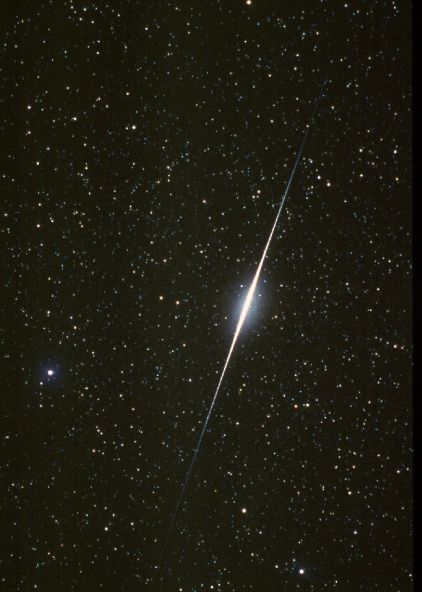
|
Explanation: While hunting for meteors in the night sky above the White Mountains near Bishop, California, astrophotographer James Young instead captured this brilliant celestial apparition. Recorded near twilight on August 13, the bright streak is not the flash of a meteor trail but sunlight glinting from a satellite. The satellite, Iridium 52, is one of a constellation of Iridium digital communication satellites in Earth orbit known for producing stunning, predictable "flares" as they momentarily reflect sunlight from shiny antenna surfaces. For well placed observers, the peak brightness of this Iridium satellite flare reached about -6 magnitude, not quite as bright as the half illuminated moon. At magnitude 2.5, the bright star at the left is Alpha Pegasi, a star in the constellation Pegasus.
|
January February March April May June July August September October November December |
| ||||||||||||||||||||||||||||||||||||||||||||||||
NASA Web Site Statements, Warnings, and Disclaimers
NASA Official: Jay Norris. Specific rights apply.
A service of: LHEA at NASA / GSFC
& Michigan Tech. U.
Based on Astronomy Picture
Of the Day
Publications with keywords: meteor - Iridium sattellite
Publications with words: meteor - Iridium sattellite
See also:
- APOD: 2025 August 25 Á The Meteor and the Star Cluster
- APOD: 2025 August 6 Á Meteor before Galaxy
- APOD: 2024 November 27 Á The Meteor and the Comet
- Meteor over the Bay of Naples
- Fireball over Iceland
- APOD: 2023 August 23 Á The Meteor and the Galaxy
- APOD: 2023 July 16 Á Meteor and Milky Way over the Alps
